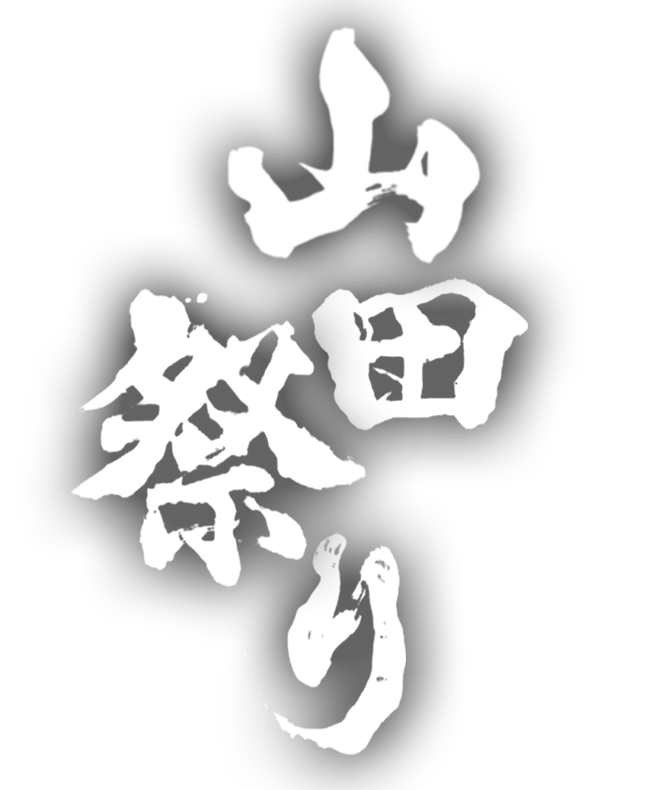Video Gallery

Iwate Sanriku
Yamada Festival
― A Town Living with the Sea God ―
“We may not return home for New Year’s or Obon,
but we always return for the festival.”
In this quiet fishing town, everyday life flows gently.
Yet on festival days, the streets overflow with people of all ages,
drawn together by the spirit of celebration.
Here, a year begins with the festival and ends with the festival.
Yamada is one of Japan’s most passionate festival towns,
overflowing with devotion and fiery energy.
About Yamada Festival
“Yamada Hachimangu Shrine” and “Osugi Shrine”
A festival uniting two sacred traditions.

Yamada Matsuri is the collective name for a three-day celebration that brings together the Eve Festivals (Yomiyasai) and Annual Grand Festivals (Reitaisai) of two shrines—Yamada Hachiman Shrine and Osugi Shrine.
Among its highlights is the Shinkosai (Divine Procession), in which the sacred spirit is placed in a mikoshi (portable shrine) and carried through the town.
This “Yamada Shinko Procession” was officially designated as an Intangible Folk Cultural Property of Iwate Prefecture in 2024, recognizing it as a traditional festival where unique local culture continues to be passed down through generations.
Yamada’s “Wild Mikoshi”
― The Sacred Shrine and the Fierce Spirit of Its Bearers ―

The highlight of Yamada Festival is the “Wild Mikoshi”.
From the moment it departs the shrine at dawn until its return at night, the mikoshi (portable shrine carrying the divine spirit) is paraded through the town.
The bearers, full of passion and intensity, run, spin, and charge with the mikoshi, shouting “Wasse! Wasse!” as they race through the streets from morning until evening.
The Eight Local Performing Arts
― Each Playing Its Role, Accompanying the Mikoshi ―








During the Shinkosai (Divine Procession), eight local performing arts surround the mikoshi, cheering on the “Wild Mikoshi” as it makes its way through the town.
Purifying the Path of the Mikoshi
Hachiman Daikagura and Yamada Daikagura
Guarding Behind the Mikoshi
Hachiman Shishimai and Sekiguchi Kenbu
Cheering and Rousing the Spirits
Sakaida Toramai and Atago Youth Association Yagibushi
Adding Color to the Festival
Kawamukai Junishi
Connecting the Gods and the Townspeople
Sekiguchi Fudoson Kagura
Each local performing arts group fulfills its own role,
supporting the sacred processions of the two shrines.
Yamada Hachimangu Shrine – Mikoshi Kangen
「 Mihashi Nobori」


The Greatest Highlight of Yamada Hachimangu Shrine’s Shinkosai
After a full day of racing through the town, the mikoshi bearers, already at the limits of their strength, face the final challenge: Mihashi Nobori—the Sacred Stairway Ascent.
At the top of this steep staircase awaits the shrine itself. With every ounce of strength, the bearers push forward, lifting the mikoshi up the steps and returning it to the sanctuary.
At times, the sheer weight of the mikoshi causes the procession to falter, nearly collapsing under the strain. Yet the local performing arts groups continue their lively music and dance, while the crowd shouts encouragement, creating a powerful sense of unity as everyone watches the mikoshi reach its destination.
This is the most moving and electrifying moment of the festival—an experience you must witness at least once in your lifetime.
Ōsugi Shrine – Kaijō Togyo
「 Oshio Gori」


A Major Ritual of the Ōsugi Shrine Shinkosai
One of the most spectacular highlights of the Ōsugi Shrine festival is the Kaijō Togyo (Mikoshi Procession at Sea).
The mikoshi is placed on a boat and carried out across Yamada Bay to Myōjinzaki, a sacred cape at the bay’s entrance, where prayers are offered for safety at sea.
Before this sea procession begins, the mikoshi, having departed the shrine at dawn, undergoes Oshio Gori, a rite of purification in which it is carried from the beach directly into the sea to be cleansed of impurity.
While sea processions of mikoshi can be seen in various parts of Japan, they are usually performed by loading the mikoshi directly from the pier onto a vessel. At Ōsugi Shrine, however, the traditional method is preserved: the mikoshi is first carried from the beach to a small boat, then transferred by pulling ropes onto a larger ceremonial vessel (koshifune). This time-honored practice has been handed down unchanged through the generations and is recognized as an Intangible Folk Cultural Property of Iwate Prefecture.
Adding to the spectacle, the vigorous morning “Wild Mikoshi” charges into the surrounding festival floats of the local performing arts groups in a dramatic clash known as kakeai.
It is a breathtaking scene best experienced in person—so we invite you to visit the shore in the early morning and witness this unique tradition for yourself.
Yamada Festival Etiquette
― How to Enjoy the Local Festival Respectfully ―
To Enjoy Yamada Festival Comfortably
- Wear light, comfortable clothing and well-broken-in shoes
- Bring a towel and plenty of water (heatstroke prevention)
- Prepare for sudden rain with a rain poncho (umbrellas may easily break)
Yamada Festival is a festival dedicated to honoring the gods carried in the mikoshi.
Please give top priority to the mikoshi and keep the following in mind:
- Do not touch the mikoshi.
→Only bearers who have undergone purification are allowed to handle it. - Do not look down on the mikoshi from the second floor of a building.
→It is considered disrespectful to look down on the gods. - Make way when the mikoshi approaches.
→The mikoshi cannot stop suddenly, and it may be dangerous if the path is blocked.



















 Jp
Jp

